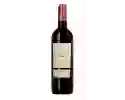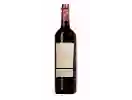
Château Terre FauveL’Eté Fauve Syrah de Sables Rouges
This wine generally goes well with
The L’Eté Fauve Syrah de Sables Rouges of the Château Terre Fauve is in the top 0 of wines of South West.
Details and technical informations about Château Terre Fauve's L’Eté Fauve Syrah de Sables Rouges.
Discover the grape variety: Dabouki
It is most certainly Syrian. By crossing it with the Chasselas, we obtained the Danlas variety, which, by its foliage, somewhat resembles that of its mother the Dabouki. It can be found in Israel, Jordan, Palestine, Syria, Lebanon, Algeria, Tunisia, Morocco, etc. In France it is practically endangered, but it is still listed in the Official Catalogue of Table Grape Varieties, list A1.
Last vintages of this wine
The best vintages of L’Eté Fauve Syrah de Sables Rouges from Château Terre Fauve are 2020, 0
Informations about the Château Terre Fauve
The Château Terre Fauve is one of of the world's greatest estates. It offers 7 wines for sale in the of South West to come and discover on site or to buy online.
The wine region of South West
The South-West is a large territorial area of France, comprising the administrative regions of Aquitaine, Limousin and Midi-Pyrénées. However, as far as the French wine area is concerned, the South-West region is a little less clear-cut, as it excludes Bordeaux - a wine region so productive that it is de facto an area in its own right. The wines of the South West have a Long and eventful history. The local rivers play a key role, as they were the main trade routes to bring wines from traditional regions such as Cahors, Bergerac, Buzet and Gaillac to their markets.
The word of the wine: Net
Said of a frank wine with well-defined characteristics.









